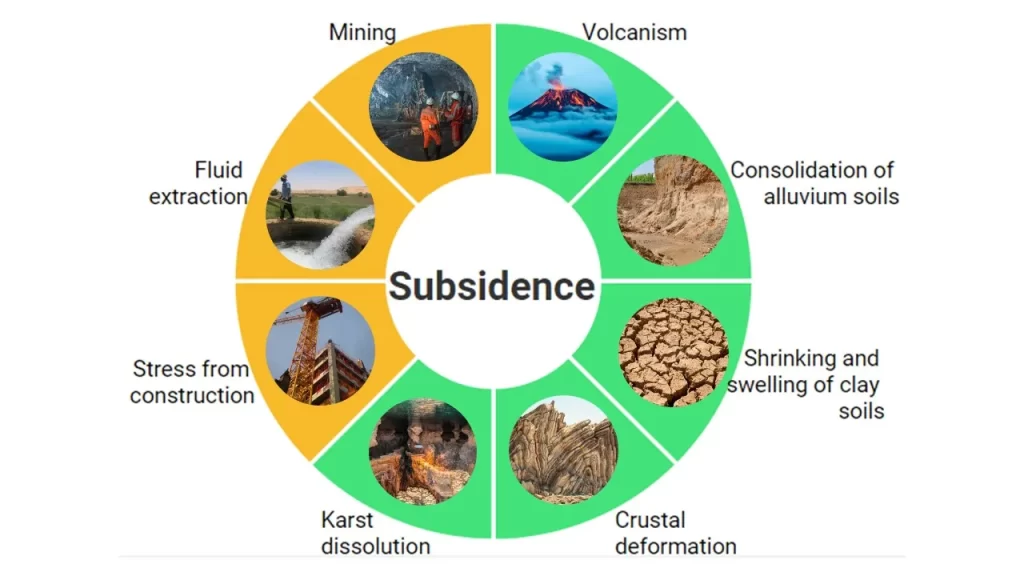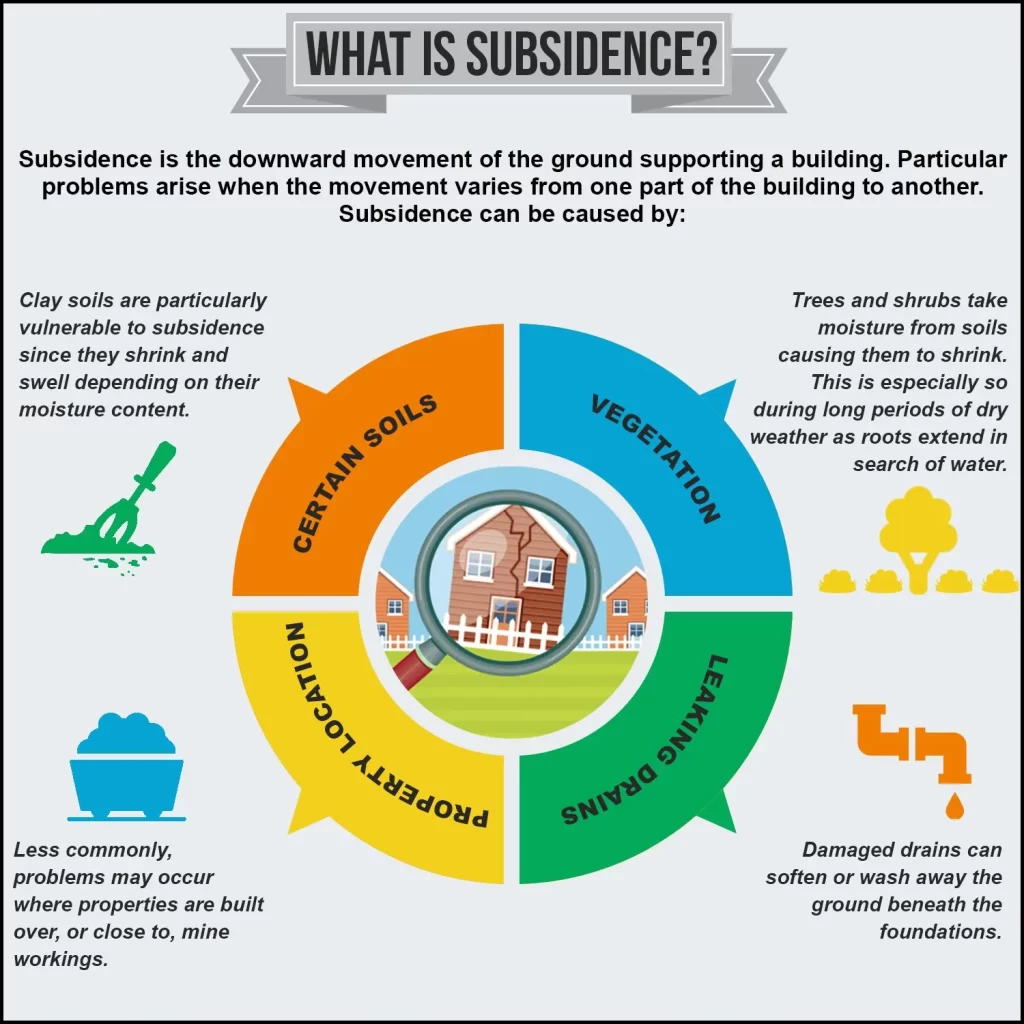The problem of subsidence is a serious one for homeowners, as it affects the structural stability of their homes and can lead to very costly repair bills.
Subsidence, which is the slow sinking of the ground and the subsequent sinking of one or more points on structures above it, can be brought on by a variety of triggers. The most common cause of subsidence is the ground on which a structure rests, especially clay soil, which can expand and contract with changes in moisture levels. Other factors include:
Knowing and understanding these triggers is an essential tool in diagnosing subsidence and implement effective remedial measure.
A subsidence survey is an in-depth investigation carried out by a Chartered Surveyor or Structural Engineer to establish if subsidence is present and the extent of the movement. This can involve visual inspection of the property, level surveys and where necessary drain surveys to find leaks affecting the stability of the ground. The findings will be prepared in a subsidence report with recommendations for the necessary remedial actions.
Depending on the size of the property, its location, and the complexity of the survey, the price of a subsidence survey can average £700. Although individual prices may have to be discussed with surveyors personally, those who suspect subsidence or are experiencing subsidence should invest in the specialist evaluation a professional provides.
Our panel of London subsidence surveyors conduct building surveys and structural integrity assessments to identify subsidence issues. They perform detailed examinations, including RICS level 2 and level 3 surveys, which allow them to find general issues with the property. This entails understanding environmental impacts and assessing the conditions of homes thoroughly. A subsequent subsidence report should be commissioned if the building survey or Homebuyer report flags this defect.
The inclusion of subsidence damage in insurance policies is variable across insurers and the policy details. Subsidence repair costs are often covered within home and commercial property insurance, but it is important to check your policy wording or consult the Financial Ombudsman’s website for more information.
Engaging in preventative measures can greatly decrease the risk of subsidence, such as:


If there are concerns about whether a home may be at risk of subsidence, a surveyor, usually from the Royal Institution of Chartered Surveyors (RICS), will check for subsidence as part of either a RICS level 2 or level 3 Building Survey. A structural engineer may be called in for a more thorough examination if subsidence risk is flagged.
A subsidence report is then commissioned and this involves a visual inspection of the property to identify possible sources of subsidence damage, such as leaks from underground drains or the impact of neighbouring trees taking moisture out of the soil beneath the property.
The survey report identifies possible cause of subsidence damage and outlines steps that may be required including initial risk appraisal and potential remedial actions to limit any further movement and possible damage. A structural engineer may recommend underpinning your home foundations to stabilise the movement.
By gaining an understanding of the causes, signs and solutions of subsidence, which leads to realising of the essential need for a subsidence survey, homeowners can take precautionary steps to make sure that they’ll be investing in something sustainable and safe for years to come.
Detecting subsidence early can prevent further more serious damage. Signs include:
wider, diagonal cracks in the walls, that are narrow at the bottom.
It is possible to sell a house with a known history of subsidence, but it may have an impact on the property’s worth and appeal to buyers. A subsidence report carried out by a qualified surveyor can offer transparency and set out any remedial activity that has been conducted, which might make the property more attractive to a potential buyer.
A last resort technique in combating building subsidence, as it can cause further issues if not done properly, underpinning is a method used to reinforce foundations.
Failure to act on subsidence issues can lead to devastating structural damage and potentially even condemn the building. Underpinning can involve deepening the foundation, or widening it at the bottom, sometimes both. This is done in order to deepen the foundation past the varied levels of soil, which might be causing the structure to move, to stronger and more stable soil. Or, the ground beneath the foundation distributes the weight of the structure over a larger area. In either method, underpinning ordinarily stabilises your property by providing a stable base to support what is above.
Underpinning has a number of important advantages, including the fact that it can target different causes of subsidence, such as clay soil expansion and contraction, water running under the soil and removing material, or the ground eroding away due to environmental factors. It’s also a flexible method that can be adapted for the particular needs and circumstances of each property.
However, if the underpinning method is substandard, this could accelerate the occurrence of subsidence, causing more harm than good. It is therefore of paramount importance that you select a competent contractor.





